[ad_1]
In at this time’s article, we’ll dive into the intricacies of Moralis’ ETH API. This industry-leading interface lets you effortlessly question tokens, transactions, metadata, NFTs, costs, and way more from the Ethereum blockchain. Consequently, with the ETH API, you’ll be able to construct crypto wallets, decentralized exchanges (DEXs), NFT marketplaces, or every other Web3 platforms with out breaking a sweat!
For just a little sneak peek, listed below are three endpoints showcasing how straightforward it’s to get on-chain knowledge with the ETH API:
getNativeBalance() – Question the native steadiness of any pockets: const response = await Moralis.EvmApi.steadiness.getNativeBalance({
“chain”: “0x1”,
“handle”: “0xDC24316b9AE028F1497c275EB9192a3Ea0f67022”
}); getWalletNFTs() – Get an array of all NFTs held by a pockets: const response = await Moralis.EvmApi.nft.getWalletNFTs({
“chain”: “0x1”,
“handle”: “0xff3879b8a363aed92a6eaba8f61f1a96a9ec3c1e”
}); getNFTMetadata() – Fetch the metadata of any NFT: const response = await Moralis.EvmApi.nft.getNFTMetadata({
“chain”: “0x1”,
“handle”: “0xb47e3cd837dDF8e4c57F05d70Ab865de6e193BBB”,
“tokenId”: “1”
});
The endpoints above solely scratch the floor of what’s potential with the ETH API. If you wish to be taught extra, be part of us on this article as we cowl the ins and outs of this industry-leading growth software!
Additionally, do you know that you would be able to entry the ETH API without cost? You merely want to enroll with Moralis, and also you’re able to go!
Overview
We’ll kickstart at this time’s article by exploring the ins and outs of ETH APIs. From there, we’ll instantly soar into Moralis’ ETH API, as this interface stands out because the {industry}’s premier software for constructing Web3 tasks. Subsequent, we’ll cowl a complete tutorial on how you should utilize the ETH API to fetch on-chain knowledge in three easy steps.
Get a Moralis API KeyWrite a Script Calling the ETH APIRun the Code
Lastly, to high issues off, we’ll briefly cowl some outstanding use circumstances of this industry-leading software!
If this sounds thrilling, be part of us as we kick issues off by answering the query, ”What’s an ETH API?”
What’s an ETH API?
An ETH API – brief for ”Ethereum API” – is actually a set of protocols, strategies, and guidelines permitting you to effortlessly work together with the Ethereum blockchain so you’ll be able to combine on-chain knowledge and Web3 options into your decentralized purposes (dapps) with ease!

One of the crucial difficult elements of Web3 growth is organising the infrastructure required for speaking with Ethereum and different blockchains. Doing it from scratch calls for loads of growth time, assets, and technical proficiency inside the house. Thankfully, that is the place instruments like ETH APIs enter the equation.
An ETH API is a software that lets you effortlessly combine pockets performance, get NFT balances, fetch transactions in real-time, question token costs, and way more with ease. And since you’ll be able to leverage already premade protocols and strategies, you don’t should reinvent the wheel when constructing dapps.
All in all, ETH APIs are instruments that permit you to construct Web3 tasks quicker, smarter, and extra effectively on the Ethereum community. And utilizing one will permit you to save loads of time and assets in your growth endeavors!
Now, with an summary of what an ETH API is, let’s take the next part to discover the {industry}’s main interface: Moralis’ ETH API!
What’s the Greatest ETH API? – Introducing Moralis
Moralis is an industry-leading Web3 API supplier, and in our suite of premier interfaces, you’ll discover the ETH API – the final word software for anybody trying to construct dapps and different Web3 tasks on the Ethereum blockchain!

Moralis’ ETH API is a flexible software offering a variety of outstanding options. With this interface, you’ll be able to effortlessly fetch and combine pockets knowledge, NFTs, tokens, costs, and way more with solely single strains of code. Consequently, the ETH API lets you construct every part from crypto wallets to DEXs with out breaking a sweat.
However what makes Moralis’ ETH API the very best software for Web3 growth?
To reply this question, let’s have a look at three advantages of working with Moralis:
High Efficiency: The ETH API presents high efficiency. As such, it doesn’t matter if you wish to measure by reliability, velocity, or different metrics; Moralis continues to blow the competitors out of the water. Shorter Go-To-Market Time: With the ETH API, you’ll be able to merely copy, paste, and implement code in a heartbeat. This lets you save about 83% of the typical go-to-market time when constructing Web3 tasks. Cross-Chain Compatability: The ETH API is a part of Moralis’ EVM API, that means it’s cross-chain suitable. Consequently, you should utilize the identical instruments to construct and deploy dapps throughout all the largest blockchains, together with Ethereum, BNB Good Chain (BSC), Polygon, and plenty of others.

However, that provides you an summary of the {industry}’s premier software for Ethereum growth. Within the following part, we’ll dive deeper into Moralis’ ETH API suite, which contains a number of interfaces, together with the Pockets API, NFT API, Token API, and many others. Doing so provides you with a greater understanding of what you are able to do when working with Moralis!
Pockets API
Moralis’ Pockets API is the final word software when you’re trying to construct Web3 wallets or combine pockets performance into your dapps. This interface boasts a variety of options, unparalleled scalability, and excessive flexibility. And it helps over 500 million addresses throughout all main EVM blockchain networks!
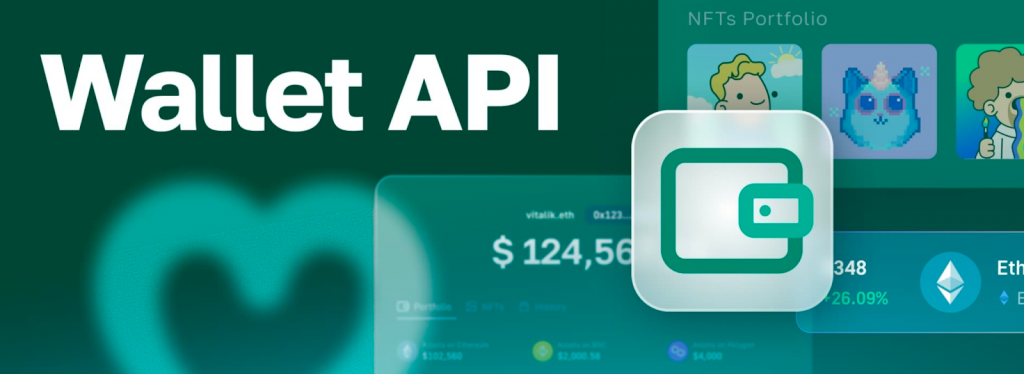
What’s extra, with solely single strains of code, you’ll be able to effortlessly use the Pockets API to get the native steadiness, NFT steadiness, transaction historical past, USD web price, and many others., of any pockets. To showcase this accessibility, listed below are three examples of outstanding endpoints:
getNativeBalance() – Get the native steadiness of any pockets:const response = await Moralis.EvmApi.steadiness.getNativeBalance({
“chain”: “0x1”,
“handle”: “0xDC24316b9AE028F1497c275EB9192a3Ea0f67022”
}); getWalletTokenBalances() – Fetch the ERC-20 token balances of any pockets:const response = await Moralis.EvmApi.token.getWalletTokenBalances({
“chain”: “0x1”,
“handle”: “0x1f9090aaE28b8a3dCeaDf281B0F12828e676c326”
}); getWalletNFTs() – Question an array of all NFTs held by any pockets: const response = await Moralis.EvmApi.nft.getWalletNFTs({
“chain”: “0x1”,
“handle”: “0xff3879b8a363aed92a6eaba8f61f1a96a9ec3c1e”
});
Furthermore, when you want to discover the assorted endpoints of this software additional, try the Pockets API documentation web page!
NFT API
The NFT API is the final word interface for fetching and integrating NFT knowledge into your dapps. And it helps over three million NFT collections throughout all main blockchain networks. This contains every part from tokens that dropped simply seconds in the past to established collections like CryptoPunks and Pudgy Penguins!
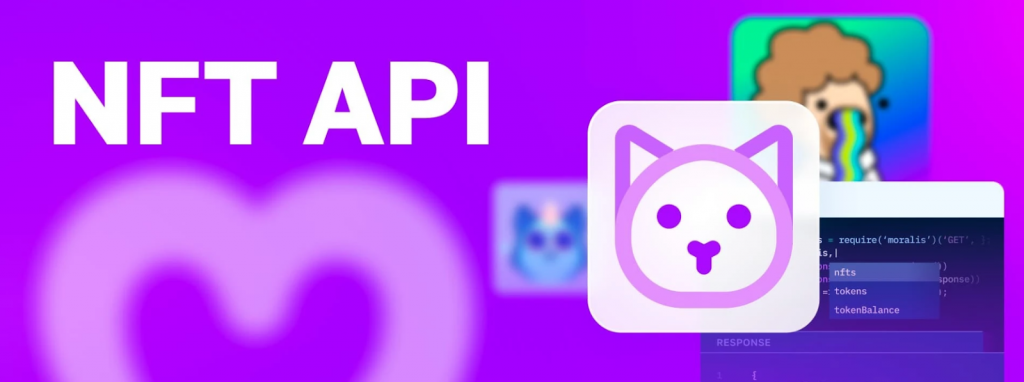
With this software, you’ll be able to seamlessly fetch NFT transfers, metadata, costs, and many others., with solely single API calls. What’s extra, the NFT API additionally supplies options like superior spam detection, handle labels, and optimized picture previews.
Furthermore, to briefly present you the way it works, listed below are three outstanding examples of endpoints you’ll possible discover useful:
getNFTMetadata() – Fetch the metadata for any NFT: const response = await Moralis.EvmApi.nft.getNFTMetadata({
“chain”: “0x1”,
“handle”: “0xb47e3cd837dDF8e4c57F05d70Ab865de6e193BBB”,
“tokenId”: “1”
}); getWalletNFTTransfers() – Question all NFT transfers of any pockets: const response = await Moralis.EvmApi.nft.getWalletNFTTransfers({
“chain”: “0x1”,
“handle”: “0x1f9090aaE28b8a3dCeaDf281B0F12828e676c326”
}); getNFTLowestPrice() – Get the bottom sold-for worth of any NFT contract:const response = await Moralis.EvmApi.nft.getNFTLowestPrice({
“chain”: “0x1”,
“handle”: “0xBC4CA0EdA7647A8aB7C2061c2E118A18a936f13D”
});
Moreover, try the official NFT API documentation web page to discover all different endpoints!
Streams API
With Moralis’ Streams API, you’ll be able to effortlessly arrange streams and get alerts despatched on to the backend of your Web3 tasks by way of webhooks. As such, that is the final word software for mechanically getting notified about Web3 occasions in real-time!
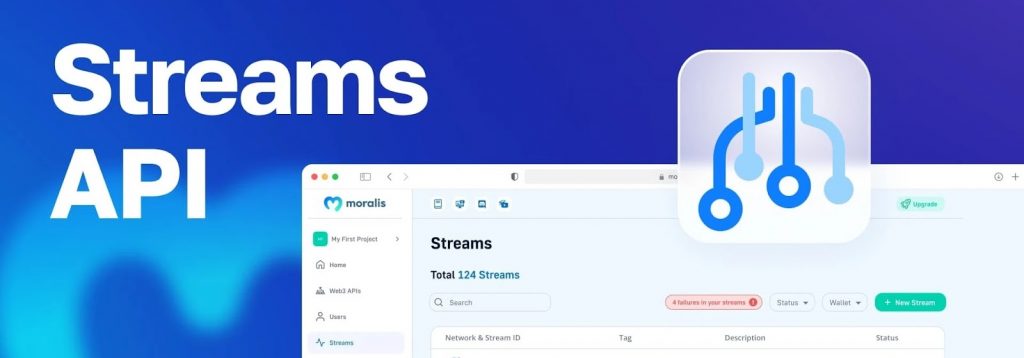
Furthermore, the Streams API helps over 44 million addresses throughout all main chains. And you should utilize this software to arrange customizable alerts for every type of occasions, sensible contracts, wallets, and extra.
So, how does it work?
Nicely, you’ll be able to arrange a stream in three straightforward steps:
Step 1: Configure your stream by selecting blockchain networks, specifying the occasions you wish to hearken to, and including a webhook vacation spot.
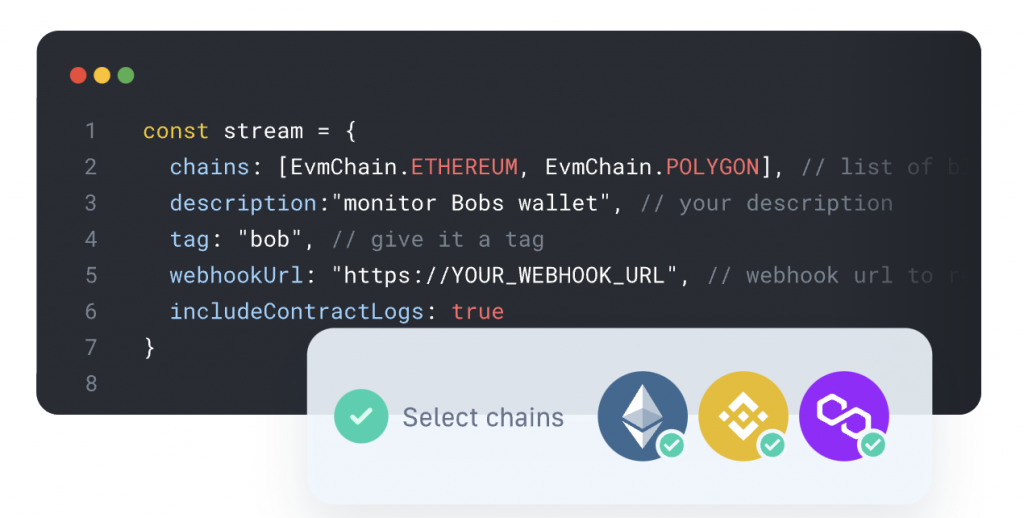
Step 2: Create your stream and get a check webhook in return.
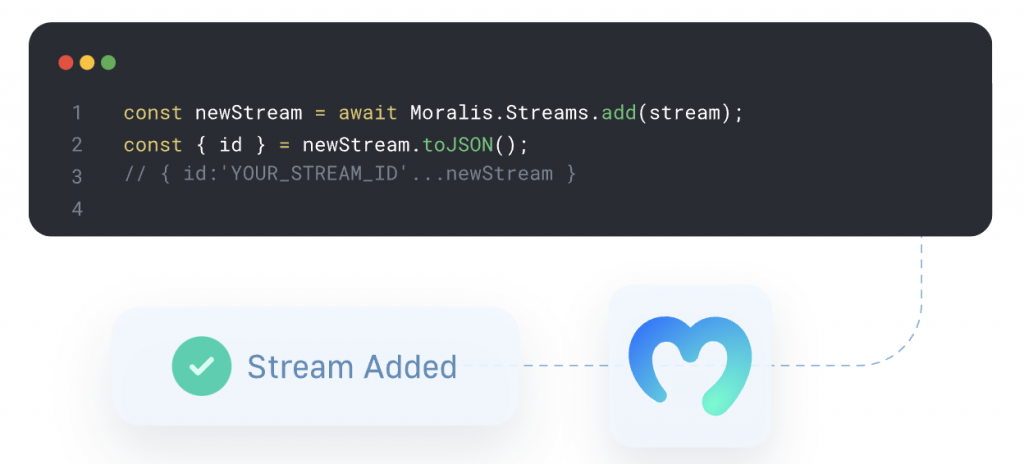
Step 3: Add the addresses you want to monitor to your stream.
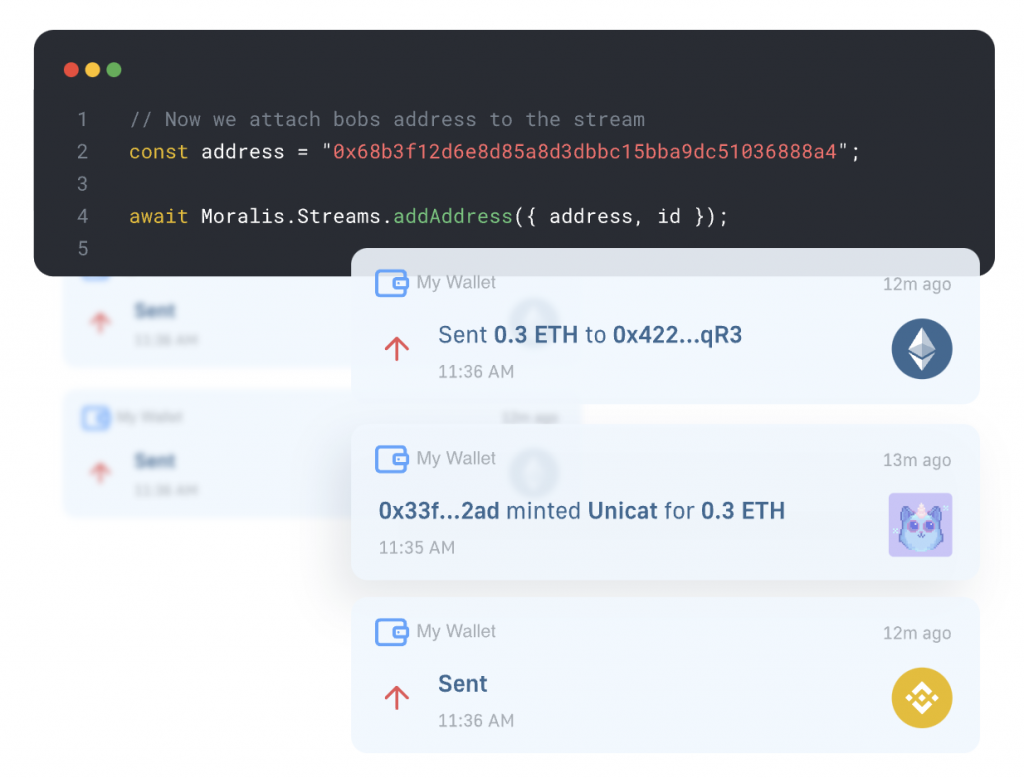
That’s it; that is how straightforward it’s to get real-time alerts when working with the Streams API!
Furthermore, to be taught extra about how this works, try the official Streams API documentation web page!
3-Step Tutorial: Get On-Chain Information with Moralis’ ETH API
Now that you’ve a greater understanding of what Moralis’ ETH API is, we’ll take this part to point out you the way it works in apply. To take action, we’ll cowl a three-step tutorial on how one can get on-chain knowledge with industry-leading software:
Get a Moralis API KeyWrite a Script Calling the ETH APIRun the Code
Nevertheless, earlier than we will dive into step one of the tutorial, you’ll must care for a couple of conditions!
Stipulations
The ETH API and Moralis work completely effective with programming languages like Python, TypeScript, and many others. Nevertheless, for this tutorial, we’ll concentrate on JavaScript. As such, it’s worthwhile to have the next prepared earlier than you’ll be able to proceed:
Step 1: Get a Moralis API Key
To make use of the ETH API, you want a Moralis API key. As such, when you haven’t already, begin by signing up with Moralis!
From there, head on over to the admin panel, click on the ”Settings” tab, scroll right down to the ”Api Keys” part, and replica your key:
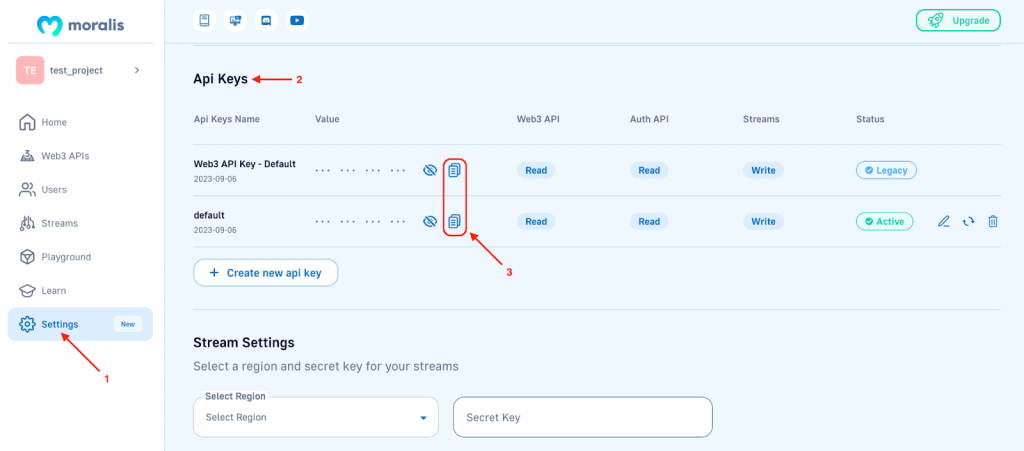
Save the important thing for now, as you’ll want it within the subsequent step to initialize the Moralis SDK.
Step 2: Write a Script Calling the ETH API
For the second step, begin by organising a brand new challenge in your IDE. From there, open a brand new terminal, ”cd” into the basis folder of the challenge, and run this command to put in the Moralis SDK:
npm set up moralis @moralisweb3/common-evm-utils
Subsequent, create a brand new ”index.js” file and add the next code:
const Moralis = require(“moralis”).default;
const { EvmChain } = require(“@moralisweb3/common-evm-utils”);
const runApp = async() => {
await Moralis.begin({
apiKey: “YOUR_API_KEY”,
// …and every other configuration
});
//Add the code for calling one of many ETH API endpoints right here
}
runApp();
From right here, you now must configure the code barely, and you can begin by changing YOUR_API_KEY with the important thing you copied within the earlier step:

Now, you additionally want so as to add the code for calling one of many endpoints of the ETH API. In our case, we’ll use getNativeBalance() for example. As such, we’ll add the next code beneath the initialization of Moralis:
//…
const handle=”0x26fcbd3afebbe28d0a8684f790c48368d21665b5″;
const chain = EvmChain.ETHEREUM;
const response = await Moralis.EvmApi.steadiness.getNativeBalance({
handle,
chain,
});
console.log(response.toJSON());
//…
All in all, your ”index.js” ought to now look one thing like this:
const Moralis = require(“moralis”).default;
const { EvmChain } = require(“@moralisweb3/common-evm-utils”);
const runApp = async() => {
await Moralis.begin({
apiKey: “m9D1…”,
// …and every other configuration
});
const handle=”0x26fcbd3afebbe28d0a8684f790c48368d21665b5″;
const chain = EvmChain.ETHEREUM;
const response = await Moralis.EvmApi.steadiness.getNativeBalance({
handle,
chain,
});
console.log(response.toJSON());
}
runApp();
In the event you want to question every other piece of information, merely exchange the code specifying the parameters and calling the endpoint.
That’s it; all that is still now could be operating the script!
Step 3: Run the Code
For the ultimate step, open a brand new terminal and run this command within the root folder of your challenge:
node index.js
In return, you need to obtain a response in your terminal with the requested knowledge. In our case – since we queried the native steadiness of a crypto pockets – it would look one thing like this:
{
“steadiness”: “50930089151337467803762”
}
That’s it. Querying on-chain knowledge doesn’t should be tougher than that when working with Moralis’ ETH API!
Furthermore, if you wish to be taught extra about how this works and discover all obtainable endpoints, please try the official Moralis documentation web page!
ETH API Use Instances
Moralis’ ETH API lets you fetch a bunch of on-chain knowledge, starting from pockets balances to token costs. Consequently, with this dynamic and versatile software, you’ll be able to construct a number of completely different platforms, and on this part, we’ll have a look at three outstanding use circumstances:
Web3 Wallets: With the ETH API, you’ll be able to effortlessly get pockets balances, transfers, native transactions, and extra. As such, with our premier interface, you get a lot of what it’s worthwhile to construct your individual Web3 pockets. If you wish to be taught extra about this, try our information on crypto pockets growth. DeFi Dapps: You should use the ETH API to construct highly effective DeFi dapps like DEXs, lending platforms, and many others. To be taught extra about this, learn our article on DeFi dapp growth. On-Chain Pockets Tracker: With options just like the Streams API, you’ll be able to effortlessly construct platforms like an on-chain pockets tracker that depends on real-time updates.
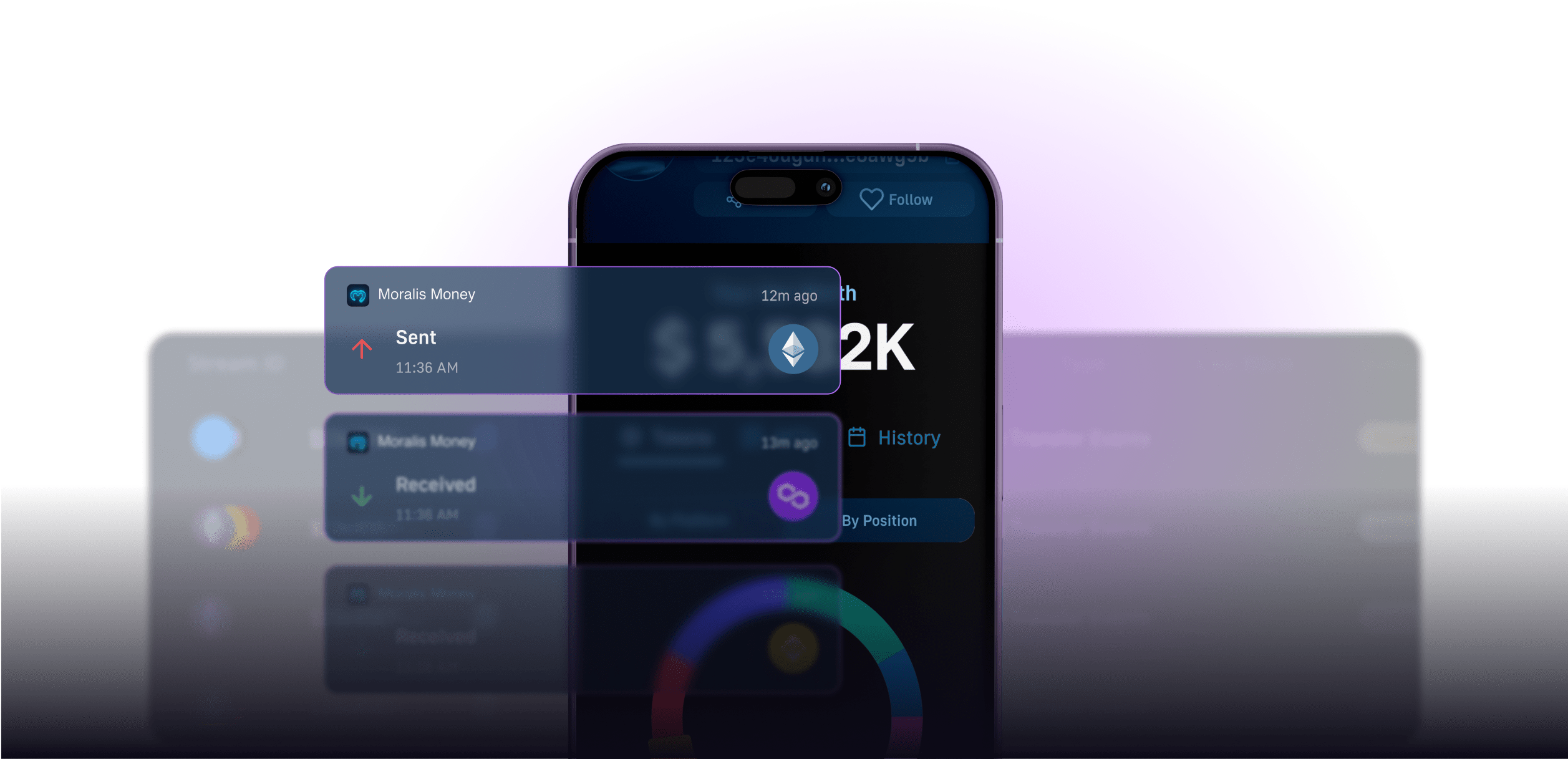
However, that solely covers three outstanding examples of ETH API use circumstances. In actuality, you are able to do much more with this premier interface. In actual fact, the one factor limiting you is your creativeness!
Abstract: Exploring Moralis’ Business-Main ETH API
In at this time’s article, we explored the ins and outs of Moralis’ ETH API – the final word software for Ethereum growth. With this main interface, you may get every part from pockets balances to NFT knowledge with solely single strains of code. As such, the ETH API supplies the instruments it’s worthwhile to construct NFT marketplaces, Web3 wallets, or every other platforms!

What’s extra, along with introducing you to the ETH API, we additionally confirmed you find out how to use this software to get on-chain knowledge in three steps:
Get a Moralis API KeyWrite a Script Calling the ETH APIRun the Code
As such, if in case you have adopted alongside this far, you now know find out how to get on-chain knowledge from the Ethereum blockchain!
Furthermore, if in case you have additional curiosity within the Web3 house, contemplate trying out Moralis’ dapp retailer: Web3 Wiki. With the Web3 Wiki, you’ll be able to effortlessly discover new Web3 tasks, together with every part from the very best Web3 developer instruments to essentially the most thrilling Web3 video games.
Additionally, if you wish to use the ETH API your self, don’t overlook to enroll with Moralis. You may arrange your Moralis account without cost, and also you’ll acquire instant entry to all our growth instruments!
[ad_2]
Source link



